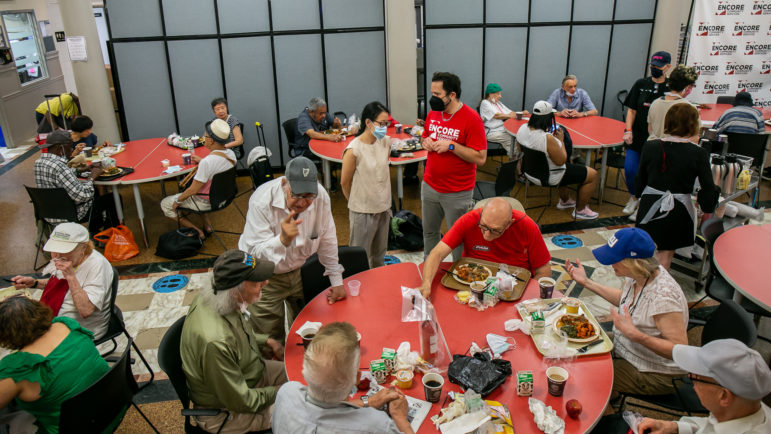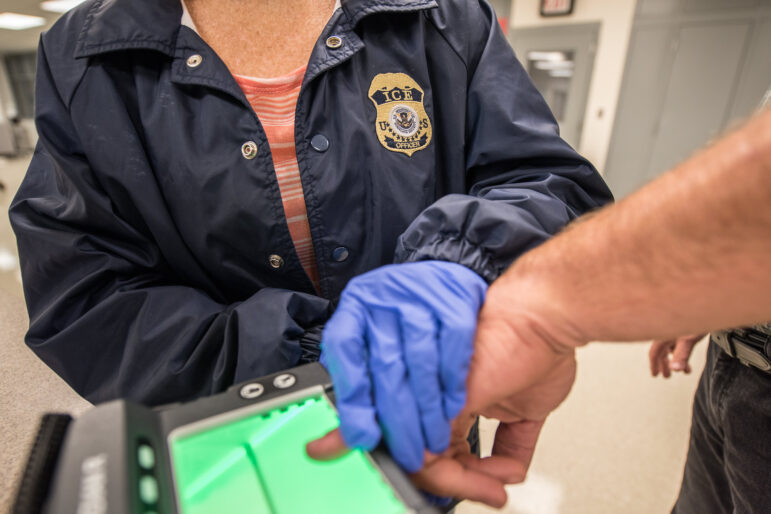The first 25 apartments of an expected 25,000 citywide were outfitted with free WiFi routers last week, spinning the first strings of a web that the company FON hopes will make wireless Internet connections possible all over New York City by the end of next year.
The plan, being piloted in the East Village, would enable anyone with a computer to access the Internet anywhere in New York City for a small fee, or for free in lower-income neighborhoods. Although it violates current customer agreements with companies such as Verizon and Time Warner Cable, technology booster Andrew Rasiej says that with enough grassroots support the big companies will have to go along with it.
Since a mass flyer-ing in the East Village two weeks ago, 200 volunteers have signed up to create an expanding network by placing routers in their homes. It should be complete by Labor Day, says Rasiej, leader of the effort, who ran unsuccessfully for New York City Public Advocate last year on a platform of bringing low-cost wireless Internet to the city. Another 400 residents citywide have signed up to receive routers, even though the program has yet to reach their neighborhoods.
Web designer Stephen Harlow, 62, who was the third person to have a router installed in his apartment, said he wanted to be a part of the international FON network so he can travel around the city and the world and stay connected to the Internet.
“The concept of a mesh network is real attractive to me,” Harlow said. “The idea that wireless connection can be spread from router to router that can be available to people who do not have a router. It will take a long time before it would really be useful, to use it on the street corner, but I would like to get there.”
Harlow, who uses the Internet daily for work, maintaining several blogs and selling his artwork on eBay, said he will defend his ability to have the router if his provider Verizon questions him. “I wouldn’t want it to cost me any economic hardship, but if there was some sort of legal challenge I would join it,” he said. “There are some principles that need be cleared up in the courts.”
The way the plan works is that residents who pay for wireless Internet service through Verizon, Time Warner or Cablevision are given free routers through the company FON to place in their apartments. In exchange for sharing their signal through the router with others on their block, residents are allowed to use anyone else’s signal for free when they travel throughout the city by logging in with a username and password.
Residents who do not already pay for Internet service can pay $3 for a day’s usage of the FON system. Rasiej says this is better for the Internet providers than the current system, where many residents steal Internet service from their neighbors without paying at all. This is also how FON makes its money: the company will split the $3 with Verizon or Time Warner or Cablevision. Rasiej, a consultant for FON, said he hopes to eliminate the $3 fee entirely in low-income neighborhoods, most likely starting with Harlem.
He’s not worried about the legality of the plan. “The chances [of] Verizon or Time Warner suing to prevent people from sharing their WiFi is about zero. There would be public outcry, number one. The service protects their network … and generates revenue,” he said. “The technology and the market is moving faster than their legal department’s ability is to keep up.”
Rasiej says that FON is in negotiations with Time Warner about the plan. Time Warner spokeswoman Maureen Huff said she investigated within her company and has not heard of any negotiations with FON, however. “It is in the customer agreement that WiFi is only allowed in your home or house or apartment and that sharing outside of your dwelling amounts to theft,” Huff said.
Upper West Side City Councilmember Gale Brewer, who heads the Committee on Technology in Government, supports Rasiej’s efforts but is skeptical that he will succeed.
“Anything that brings more service and is extremely affordable is something that we’re looking for,” Brewer said. “The big question is whether or not there will be a critical mass of people who sign up for this service. And if a lot of people sign up for this service, will Verizon and Time Warner take notice and do something about it?”
In July, the city announced it will again study the feasibility of a citywide broadband network at the same time that a combination of nonprofit and private telecommunications companies will bring Internet service to sections of 10 of the city’s main parks, including Central and Prospect Parks. The City Council also passed a resolution in February to encourage city agencies to provide free or low-cost Internet to residents living in public housing.
Bruce Lai, Brewer’s chief of staff, has been working on bringing affordable wireless Internet access to New York City for three years through his work as policy director for the technology committee. He believes the city, with its complications of size, population and politics, is far from creating a network like those proposed in smaller cities.
“If Philadelphia works, if San Francisco works that will change a lot,” he said of two cities with municipal wireless programs in development. “We have a long way to go.”
Rasiej said he is not asking government for help. And if the city ever does decide to provide broadband connections, this groundwork will only cut down on the work they have to do.
“Our goal is to do the East Village, but as the news of this project [spreads] people will say I can do my block or neighborhood or my housing development or some nonprofit organization says we’ll take 1,000” routers, Rasiej said. “This is a people-powered effort.” He chose the Village as the pilot area because of the relatively uniform building height, the high number of tech-savvy young adults, and the number of coffeeshops and restaurants where people may want to open a laptop and connect to the Internet.








